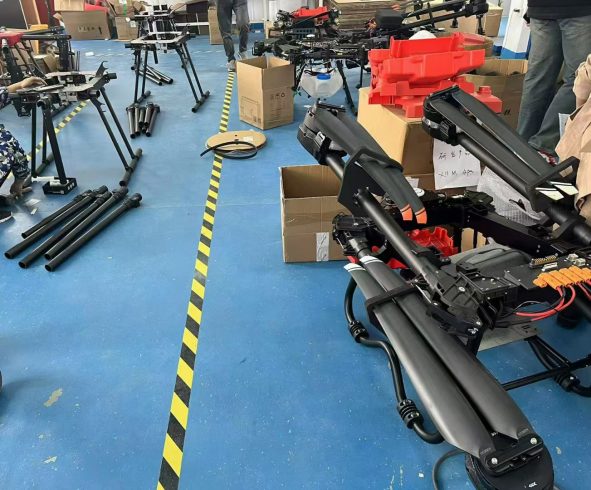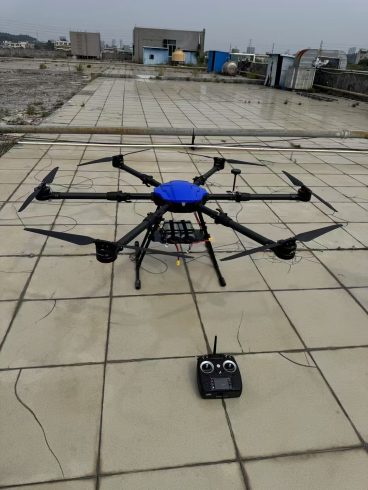![图片[1]-Drone Sprayers for Vineyard Management: Elevating Precision in Viticulture-msoen](https://www.msoen.com/wp-content/uploads/2025/04/4e0d9ec2ca214327-576x1024.jpg)
Vineyards, with their narrow rows, delicate grapevines, and often steep slopes, present unique challenges for crop management. Traditional methods like tractor-mounted sprayers struggle with accessibility, soil compaction, and uneven chemical distribution. Enter drone sprayers: agile, data-driven, and capable of revolutionizing vineyard care. This article explores how drone technology is transforming viticulture, offering winemakers and vineyard managers a smarter, more sustainable approach to pest control, disease prevention, and nutrient application.
Why Vineyards Need Specialized Spraying Solutions
Vineyard management demands precision and care due to:
- Complex Canopy Structures: Grapevine leaves and fruit grow in dense layers, requiring targeted chemical penetration.
- Sloped Terrain: Many vineyards are planted on hillsides to optimize sun exposure, complicating machinery access.
- Sustainability Pressures: Consumers and regulators increasingly demand eco-friendly practices with minimal chemical residues.
- Labor Shortages: Manual spraying is time-consuming and costly in regions with scarce skilled labor.
Drone sprayers address these challenges by combining aerial agility with cutting-edge precision agriculture technologies.
Key Advantages of Drone Sprayers in Vineyards
- Precision Canopy Penetration
Advanced drones use downward-facing nozzles and adjustable droplet sizes to ensure chemicals reach both the upper and lower layers of grapevine canopies. LiDAR or multispectral sensors map foliage density, enabling real-time spray rate adjustments. - Slope and Row Navigation
- Terrain-Following Mode: Drones automatically maintain optimal altitude (1–3 meters above vines) on uneven slopes.
- Obstacle Avoidance: 360° sensors navigate tight rows, trellis wires, and posts without damaging vines.
- Reduced Chemical Use
By targeting specific zones (e.g., mildew-prone areas), drones reduce chemical usage by 20–50% compared to blanket spraying, aligning with organic and biodynamic farming principles. - Soil and Vine Health
- Zero Soil Compaction: Unlike tractors, drones eliminate soil compression, preserving root health and water infiltration.
- Minimal Drift: Smaller droplets and controlled height minimize chemical drift to non-target areas.
- Time and Cost Efficiency
Drones cover 10–15 acres per hour, operating day or night. Autonomous flight plans slash labor costs, especially in large or hard-to-reach vineyards.
Technologies Powering Vineyard Drone Sprayers
- AI-Powered Disease Detection
Multispectral cameras identify early signs of powdery mildew, botrytis, or nutrient deficiencies, triggering spot treatments before outbreaks spread. - Variable Rate Technology (VRT)
Algorithms adjust spray volume based on canopy density, weather, and pest pressure data collected from IoT sensors in the vineyard. - Swarm Spraying
Teams of drones collaborate to treat large estates simultaneously, synchronized via cloud-based platforms. - Night Operations
Thermal cameras and LiDAR enable safe, efficient spraying during cooler nighttime hours, reducing evaporation and improving absorption.
Case Study: Optimizing a Boutique Vineyard in Europe
A 30-acre family-owned vineyard in France adopted drone spraying to combat escalating labor costs and powdery mildew outbreaks. Key results after one season:
- 40% reduction in fungicide use through targeted applications.
- 15% higher yield due to healthier canopies and reduced disease pressure.
- €8,000 saved in labor and fuel costs.
- Certification as a “Sustainable Viticulture” producer, enhancing marketability.
Overcoming Challenges in Vineyard Drone Spraying
While transformative, drone sprayers face hurdles:
- Regulatory Compliance: Strict aviation rules in wine regions like Napa or Tuscany require licenses and flight permits.
- Battery Limitations: Steep slopes and frequent direction changes drain batteries faster; hybrid-powered drones are emerging as solutions.
- Initial Investment: High-quality vineyard drones cost $15,000–$30,000, though subsidies and leasing options are becoming available.
Future Trends in Viticulture Drone Tech
- Hybrid Drones: Gas-electric models for extended flight times over expansive estates.
- Pollination Integration: Drones that spray and pollinate cover crops between vine rows.
- Blockchain Traceability: Spray data logged to blockchain for transparent “vine-to-bottle” sustainability reporting.
- AI Frost Protection: Drones deploying anti-frost agents during spring cold snaps.
Choosing the Right Drone for Your Vineyard
Consider these factors:
- Size and Slope: For small, steep vineyards, opt for compact multi-rotor drones (6–8 propellers) with high wind resistance.
- Payload Capacity: 10–15L tanks balance coverage and agility for most vineyards.
- Sensor Suite: Prioritize LiDAR, multispectral cameras, and obstacle avoidance.
- Software Integration: Ensure compatibility with vineyard management platforms for seamless data analysis.
Conclusion
Drone sprayers are redefining vineyard management by merging precision, sustainability, and efficiency. From combating diseases in Burgundy’s rolling hills to preserving soil health in Chile’s arid slopes, this technology empowers viticulturists to meet modern challenges while honoring traditional craftsmanship. While adoption requires upfront investment and regulatory navigation, the long-term benefits—higher yields, eco-certifications, and cost savings—make drones indispensable tools for the future of winemaking.
As AI, automation, and green chemistry evolve, vineyard drones will become even smarter, helping vintners produce exceptional wines with minimal environmental impact. Embrace this innovation today to secure your vineyard’s place in the next era of viticulture.











暂无评论内容